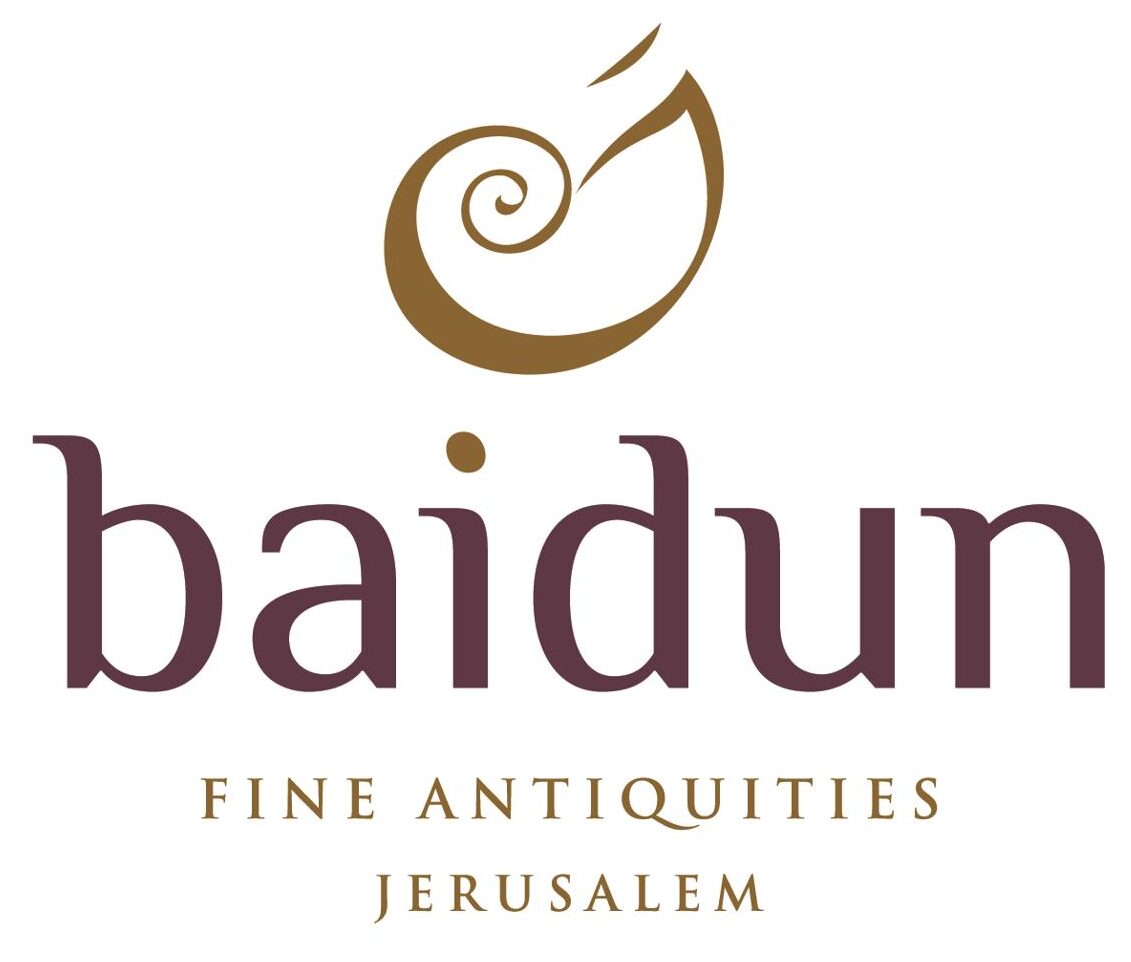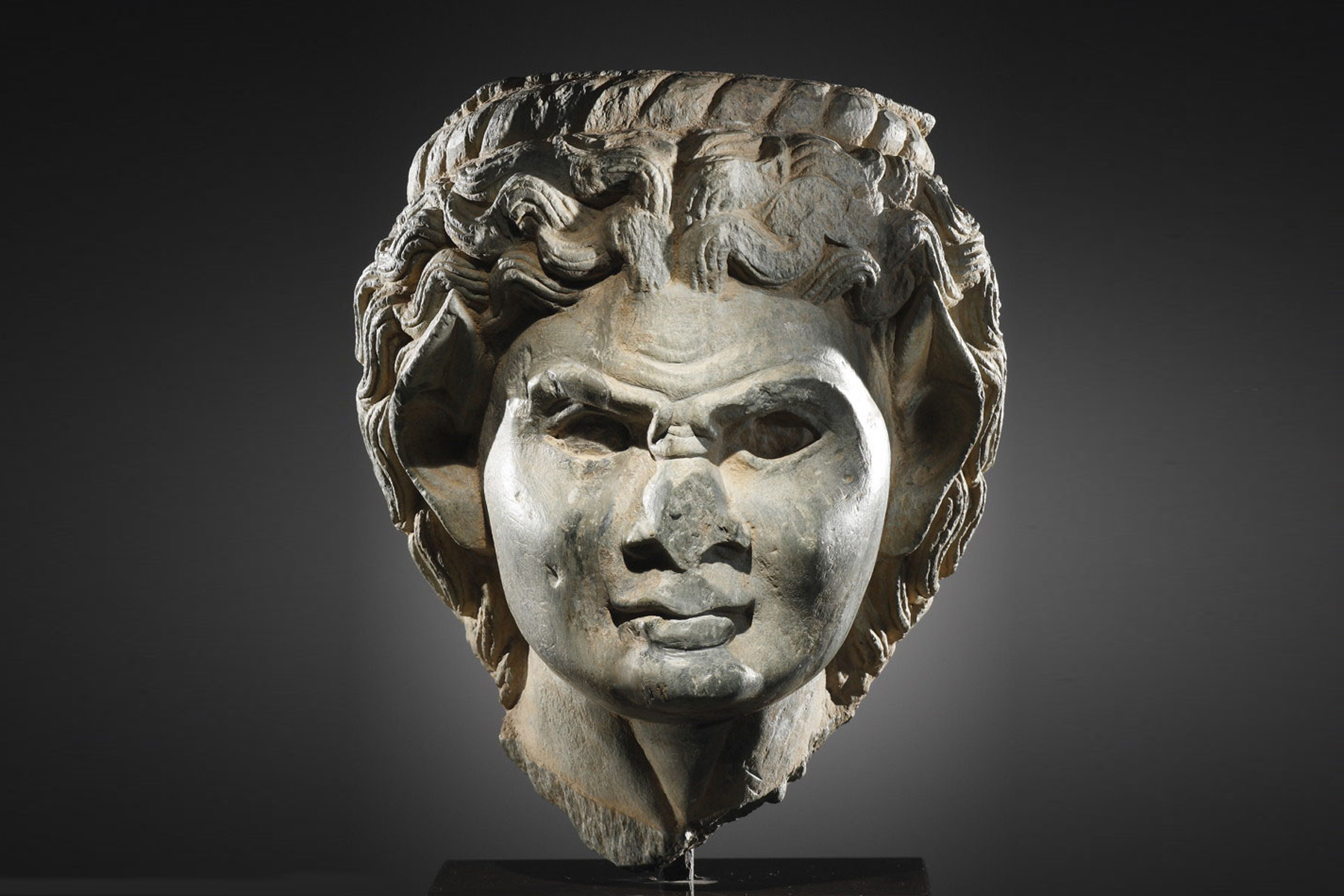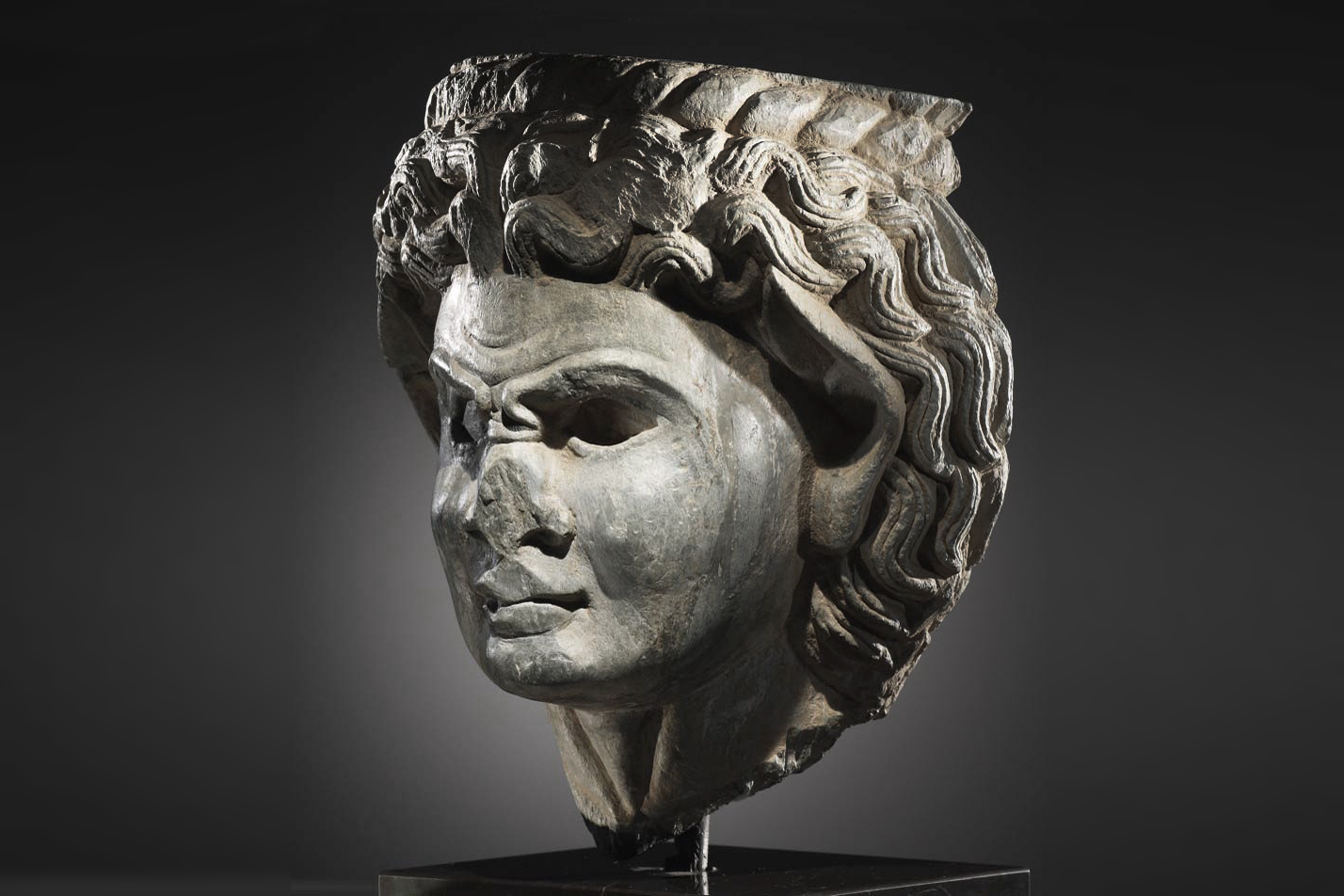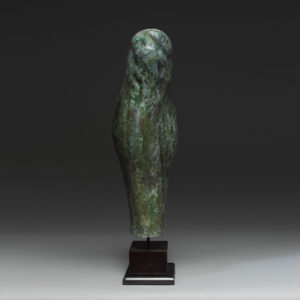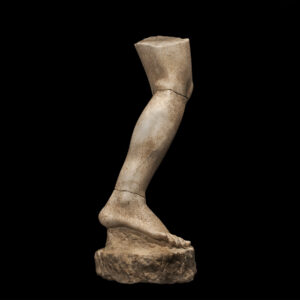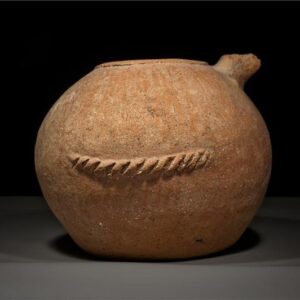The expressive face of this satyr reveals a right eye that is slightly lower than the left and a smirk carved purposefully askew. The satyr himself may be of Greek origin, yet this piece hails from central Asia, a result of the clash of cultures that arose out of Alexander the Great’s successful campaigns throughout the region. The result was a vast melting pot of culture, art and religion that spanned the subsequent Hellenistic era of Greek history, when Greek cultural influence and power was at its zenith in Europe and Asia. At the time, this satyr’s inlaid eyes and simple braided crown were uncommon in Asian art, particularly seen in Buddhist sculptures of Siddhartha from the Gandhara region of northern Pakistan. Other examples include the famous Parthian relief from Hatra, as well as the hair and head of the Peshawar Museum’s Bodhisattva. In the years after Alexander’s conquests, the region’s sculpture incorporated such elements in the intervening years as trade and technology increased the mingling of Eastern and Western cultures, creating new currents of art and thought that still inspire us to this day.
The round face is dominated by deep holes for eyes which were originally inlaid. The root of the nose is strongly furrowed, as too is the forehead above, its series of wavy grooves mirroring the curvature of the expressive high-arched brows. Prominent cheekbones, with fleshy, rounded cheeks below; under the broad nose, full sensuous lips with dimples. To either side of the face, long, pointed ears with deep auricles. A exuberant shock of curling locks, whose individual strands are articulated with incised lines, is parted in the middle to form an anastole and spreads outwards in three luxuriant strands to frame the face.
Similarly rendered locks entirely envelope the head, wig-like, in schematically arranged rows. The sinews of the neck form a pronounced V-shape. The combination of glowering features and unruly hair impart to the head an intensely expressive quality. Encircling the crown of the head is a rope-like wreath which served as the base for an attachment, its upper surface flat to accommodate another element. Head of a statue, in all likelihood an architectural support such as a Caryatid.



